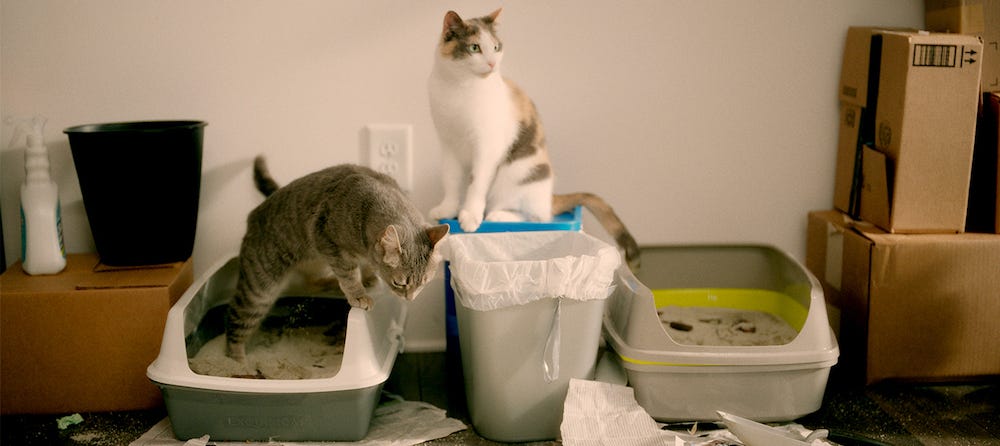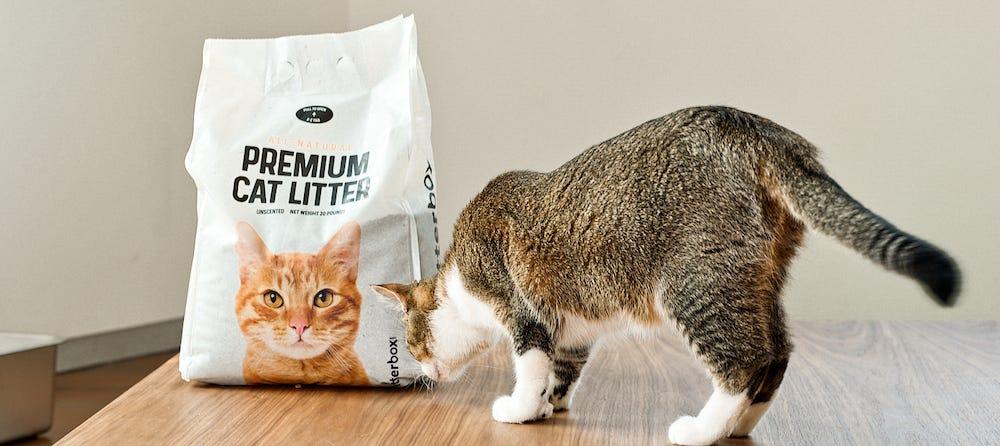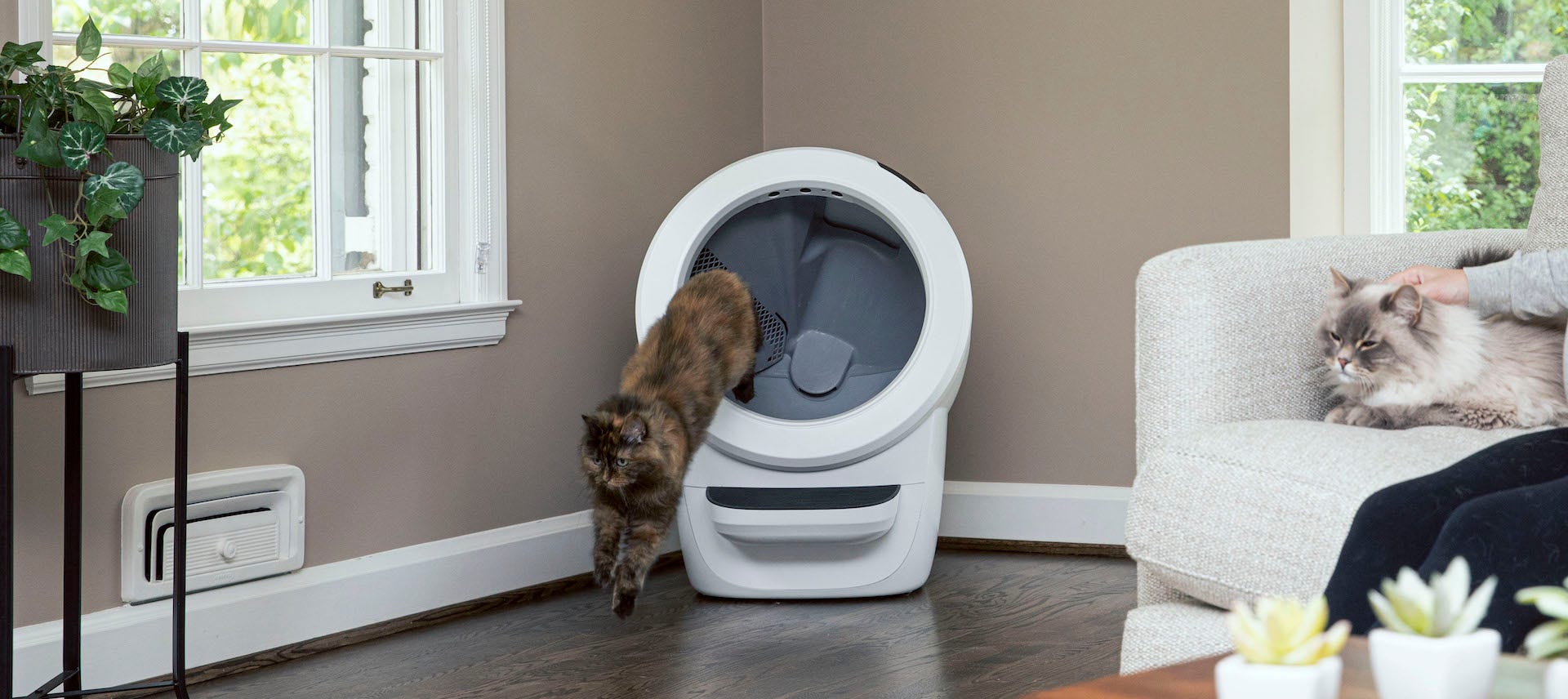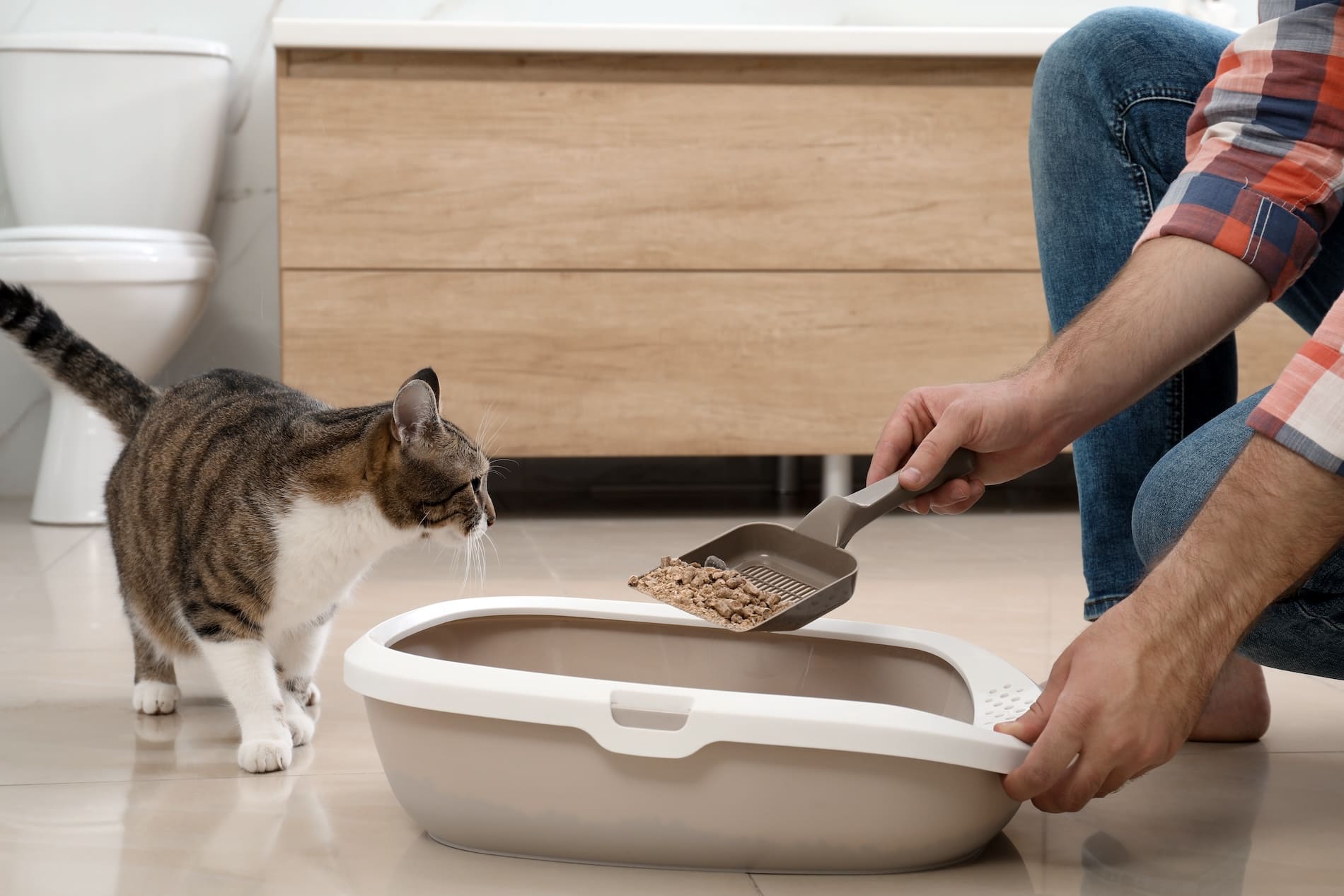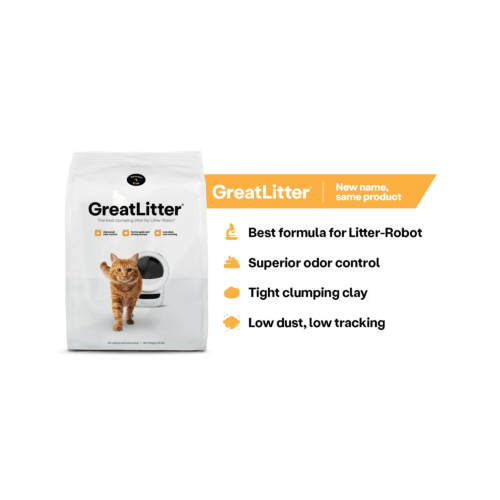Although cats were domesticated some 10,000 years ago, they’ve only become popular house pets in the last century. In the millennia leading up to spoiled, chonky, meme-worthy furry family members, felines simply used the great outdoors to bury their waste. In fact, their survival depended upon it.
Of course, the normalization of indoor cats necessitated the invention of the litter box. And what a journey it has been! What began as a paper-lined enameled metal pan (read: extremely stinky) in the 1940s has transformed into a technologically superior self-cleaning solution for cats and cat parents alike.
Luckily for us, cats instinctively use litter boxes with little to no training. Yet litter box management is an essential and often neglected component of the ideal pet care experience. This article will cover cat litter box tips ranging from maintenance and cleaning to choosing the right box and litter type.
Litter box maintenance
Many pet parents see the litter box as a necessary evil. (Scooping is no fun, after all.) But the right litter box maintenance goes a long way in helping to ensure your cat’s happiness and health.
A clean litter box is essential to a cat’s health
While scooping the litter box may be a universally despised chore, veterinarians stress just how important it is. The fact is, dirty litter boxes can lead to medical problems in cats. Scooping daily or using a self-cleaning litter box can help minimize these issues.
Wondering how a dirty litter box contributes to medical issues in cats? Because cats are fastidious and often territorial, they don’t want to step into a dirty litter box too often. They may choose to only urinate once instead of 2-3 times per day; when this happens, their urine becomes very concentrated. All of the waste that is meant to be removed from the body remains in the urinary system. This can potentially result in signs of lower urinary issues or the more life-threatening urinary blockage called feline urethral obstruction.
Litter box cleaning
We’ve established how important a consistently clean litter box is for your cat. Is there a “right” way to clean the litter box? Turns out, there is.
How much cat litter to use
First, ensure that your cat has the right amount of litter to work with. Too little cat litter can result in strong odors and your cat choosing to go outside the litter box. Too much litter makes a mess and is a waste of money.
Typically, cats prefer 2-3 inches of litter when using a standard litter box.
Our cat litter quiz will help you figure out how much litter to buy, depending on your litter box type and what kind of cat litter you use.
While there are ways to make litter usage more efficient (such as with an automatic litter box), cat litter is something you’ll always need more of. Many pet parents find that setting auto-refills on cat litter saves them time and money. Plus, it’s much more convenient to have litter delivered to your door than hauling it home from the store.
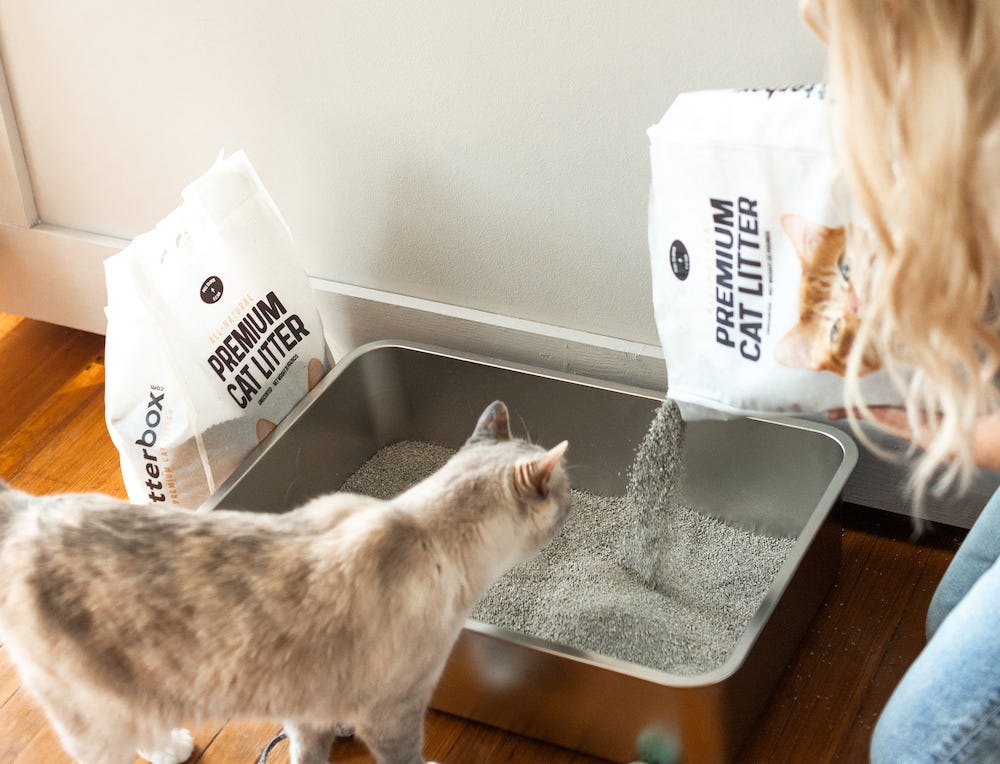
How to clean a litter box
Tried-and-true methods for cleaning the litter box include wearing gloves, ensuring your scoop is well-designed, using an unscented and pet-safe cleaner, and avoiding harsh chemicals. If manual cleaning isn't feasible or preferable for you, consider using a self-cleaning litter box. In addition, you can further mitigate litter tracking by using a high-quality cat litter mat.
How often to change cat litter
While scooping the litter box daily is a must, how often do you really need to change the litter? This depends on how many cats you have, the type of litter you use, and more. A good rule of thumb is to change clumping litter every 2-4 weeks, while non-clumping litter like pellets may need more frequent changes. Learn more about the right cleaning frequency for your household.
Can you compost cat poop?
Wondering if your cat’s poop might actually be useful? Unfortunately, cat poop should not be used as compost for food crops. Because cats have a carnivorous diet (as opposed to the diets of cows and horses), their feces carry bacteria that is harmful for edible crops.
If you’re willing to put in the work, you might consider composting cat poop to fertilize your lawn or flower gardens (anything that isn’t edible).
How many litter boxes per cat?
Providing your cats with the right number of litter boxes is as important as keeping the litter box clean.
Veterinarians suggest this easy-to-remember rule: n+1 litter boxes per cat.
So, the ideal number of litter boxes for 1 cat is 2; for 2 cats, 3 litter boxes, and so on. Remember that having too few litter boxes can lead to territorial and even medical problems in your cat household.
If you have a self-cleaning litter box, you generally don’t need to follow this rule. For example, because it provides a clean bed of litter after every use, one Litter-Robot is suitable for up to four cats.
Why you should monitor your cat’s litter box habits
Your cat’s bathroom behavior says a lot about their overall well-being. Some very important—yet often overlooked—aspects of feline health include how often your cat urinates or defecates, as well as the size of their urine clumps (or lack thereof) and the appearance of their poop.
If you scoop daily, you’re more likely to notice a sudden increase or decrease in litter box use. A smart litter box like Litter-Robot 4 takes this a step further by literally showing you the data—including daily, weekly, and monthly activity to help you identify patterns and irregularities.
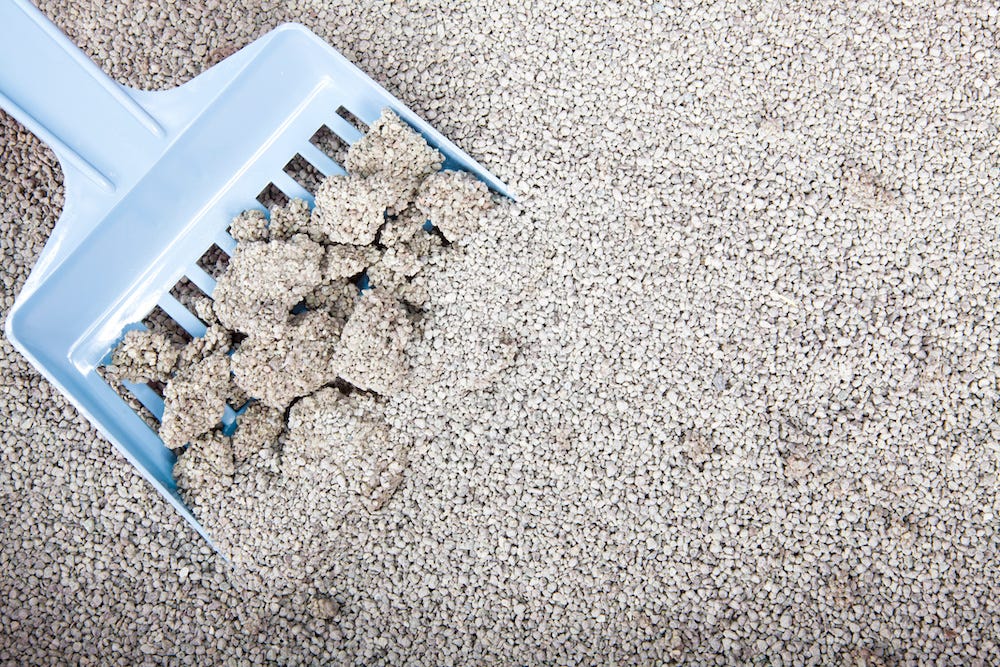
Common litter box problems
Cat litter box issues can be frustrating and worrisome for pet parents. Whether it’s your cat not using the litter box or your dog finding the litter box a little too enticing, we’ll cover some common problems below.
Cat not using the litter box
There are several reasons why your cat may be peeing outside the litter box or even peeing next to the litter box. First, you should set up an appointment with the vet to make sure this behavior isn’t caused by a medical issue—especially if your cat suddenly stopped using the litter box while they were using it fine before. Common medical problems that can result in cats peeing outside the litter box include:
Stress, anxiety, and even a dirty litter box can also contribute to your cat missing the mark. If you’re wondering how to stop a cat from peeing everywhere and you’ve ruled out medical issues, it’s important to clean the litter box frequently.
Clean any soiled areas in the home with an enzymatic cleaner, and reduce stress wherever possible. Make sure you have an adequate number of litter boxes in the house (or one self-cleaning litter box for up to four cats), preferably in multiple locations in case one cat is being territorial with the boxes.
Cat sleeping in the litter box
Your cat sleeping in the litter box may be a sign of:
- Illness
- Pregnancy
- Anxiety
- Seeking refuge
- Territorial guarding
Unless you otherwise have an explanation for the change in sleeping arrangements (and a solution), call your vet to determine whether an evaluation is recommended.
If your cat is spending a lot of time in the litter box, take note of what they are doing in there. Is your cat using the litter box, and then lingering? Or not using the litter box, but resting or acting lethargic? Are they on high alert, as if they are defending the litter box against intruders (other cats in the house)?
Dog getting into the litter box
Pet households with cats and dogs face unique challenges, one of which is deterring a dog from snacking on the contents of the litter box. Fortunately, there are ways to dog-proof a litter box.
Some pet parents set up physical barriers around the litter box, including baby gates, door latches, and cat doors. However, it’s important that your cat still has easy access to their bathroom.
You can also try a covered litter box, hiding the litter box inside a specially designed piece of furniture, or switching to a self-cleaning litter box that scoops your cat’s waste within a few minutes.
Choosing the right litter box
Finding the best litter box for your cat is a bit of a Goldilocks situation. A box that is too small, too shallow, or in any other way does not suit your cat’s needs will ultimately result in your cat going to the bathroom elsewhere. Consider your cat’s behavior and characteristics before making a purchase.
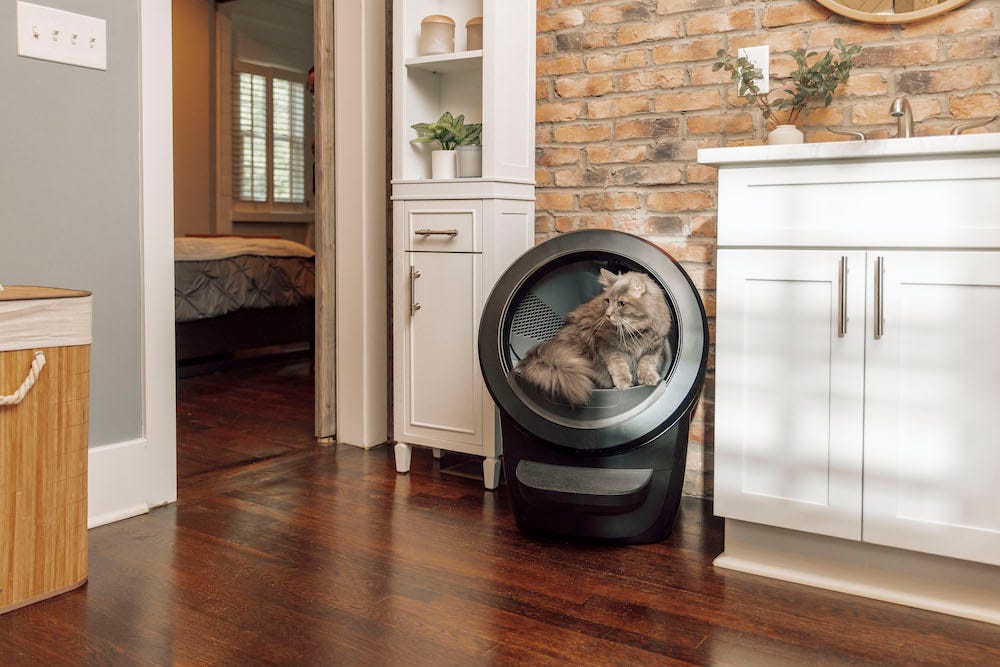
For large cats
Big cats need big litter boxes but finding the best litter box for large cats can be challenging.
Big cats tend to prefer litter boxes that feel open or airy, where they can enter and exit with ease, turn around comfortably, and use the box without feeling confined. And because large cats make larger messes, you might want to use an automatic litter box that does the cleaning for you. A great solution is Litter-Robot 4, which features a large 15.75’’W x 15.75’’H entryway that provides an open-air feel while using the litter box.
Some pet parents use plastic containers, such as large storage bins and under-bed storage containers, as cost-effective large litter boxes. Just make sure you have enough appropriately sized litter boxes, as you don't want to create a situation where all of your larger cats are forced to use one large litter box.
For multiple cats
Don’t forget the golden litter box rule: you should have n+1 traditional litter boxes per cat but is there a unique solution for multi-cat households? There is. In fact, there are multiple. It’s only a matter of finding the best litter box for multiple cats.
Additionally, you should strategically place litter boxes throughout the house to provide each cat with easy access to a box. Larger boxes also help minimize territorial disputes and reduce the likelihood of litter being kicked out.
You can even take it up a notch and upgrade to the best self-cleaning litter box for multiple cats where each of your cats has access to a clean bed of litter with every use. Litter-Robot 4 is suitable for up to 4 cats and provides smart insights about individual cats, including their litter box usage, weight, and more.
For aging cats
Selecting the best senior cat litter box involves considering various factors to meet their unique needs, especially arthritic cats. Look for a box with low entry points to make it easier for older cats to step inside, a large entrance rather than a small opening, and easy access without the need to jump. This may involve adding a ramp accessory to the litter box opening.
Older cats can be more prone to accidents, which means a clean litter box is more important than ever. A self-cleaning solution will reduce the physical effort required to maintain the litter box for both senior cats and senior cat parents.
For messy cats
Some litter-kicking kitties are messy because they’re dissatisfied with how clean the litter box is, the type of cat litter you’re using, or the excessive amount of litter in the box. Scoop daily and add only 2-3 inches of litter to the box. You can also try experimenting with another type of litter.
In general, the best litter box for messy cats is enclosed, self-cleaning while being easy to clean, and able to accommodate accessories that help further reduce the mess. You can also use a litter mat or place the litter box inside a piece of furniture to reduce tracking.
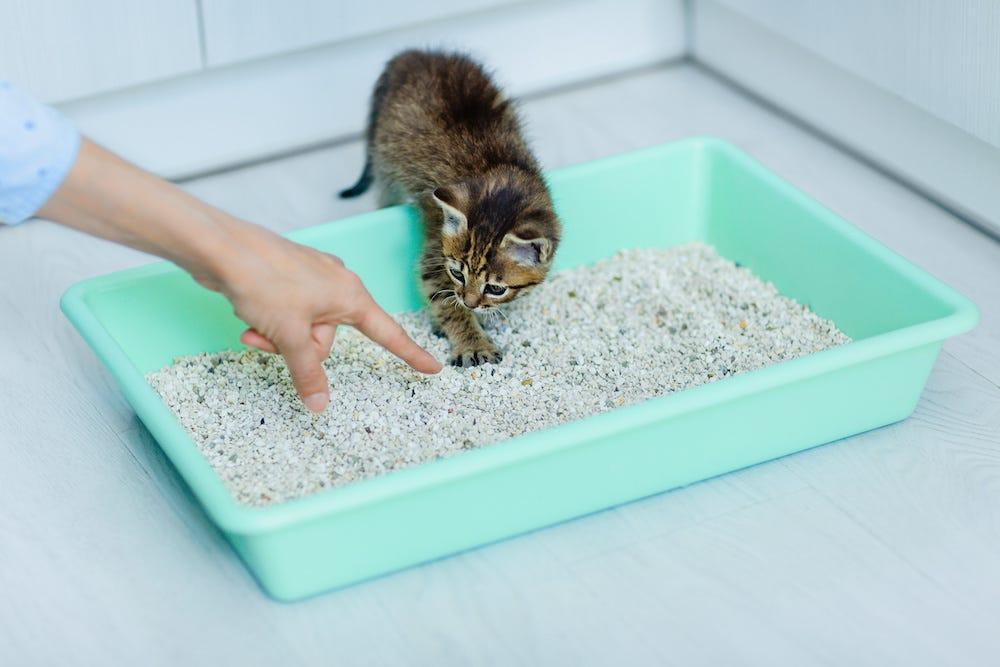
For kittens
On one hand, it’s important to provide a kitten litter box that has easy accessibility, such as a shallow litter pan. On the other, it may be beneficial to choose a litter box that you know your kitten can grow into and enjoy throughout adulthood. In this case, a large litter box with a low entry point or a ramp for access is the way to go.
Introduce your kitten to their litter box right away. Most kittens don’t need special training to know how to use the litter box, but you’ll want to give them time to smell and inspect their litter box. Make sure the box is left in a consistent spot and cleaned frequently.
For odor control
Even if you scoop your cat’s traditional litter box daily, there’s a good chance you’re still getting whiffs of litter box odors from time to time. So what is the best cat litter box for odor control?
An effective litter box that reduces odors is ideally designed to minimize waste exposure and maximize odor-absorbing components. Look for an enclosed design that can accommodate odor-neutralizing accessories. Even better? Automatic cleaning that disposes of the waste in a separate compartment.
If you’re searching for a litter box that doesn’t smell, your best bet is a covered cat litter box that comes with a sealed drawer, carbon filter, or other odor-eliminating accessories.
Avoid an open design, plastic material, small size, and, if using a self-cleaning litter box, an improperly sealed waste compartment.
Are these litter boxes worth it?
Many types of litter boxes are available today. How do you know which ones are worth the price and the effort to acclimate your cat? We’ll discuss more below.
Disposable litter boxes
While convenient in specific circumstances such as traveling, there are multiple downsides to disposable litter boxes.
For example, they can be difficult to clean. Although you simply throw them in the trash at the end of the month, scooping them can be challenging due to the ridges, grooves, and corners often incorporated in their design.
They’re also not typically tear- or shred-proof—so if you have a cat that likes to dig around using their nails, you’re going to end up with even more hard-to-clean grooves in the box.
Disposable cat litter boxes are not well-suited for clay-clumping litter. Many customers report that this type of litter gets “gunked up” against the base of the box, which makes it even more difficult to clean. If clumping litter is your cat’s preference (as it is for a majority of cats), you may have an issue with disposable litter boxes.
Elevated litter boxes
A raised or elevated litter box can offer many upsides for pet households. Cats, like people, prefer privacy when using the bathroom. An elevated litter box can help them feel more comfortable and confident at their most vulnerable. But your cat isn’t the only one benefiting: Elevated litter boxes can reduce litter tracking and help keep dogs out of the box.
However, this type of litter box may be more difficult to access, particularly in the case of top-entry elevated litter boxes. Providing steps or a ramp so your cat can easily and safely use a raised litter box will remedy this issue.
Covered litter boxes
A covered cat litter box provides cats with the privacy they need while also helping homes stay fresh and free of feline odors. But will your cat use one? Research shows that cats in general don't care whether their litter box is covered or uncovered.
Covered litter boxes are also great for reducing litter box odors and can also help with litter tracking and residue, particularly if you use dusty cat litter. Instead of wafting up and out of the litter box, that cloud of dust stays contained.

Self-cleaning litter boxes
Most pet parents would offload the chore of scooping cat poop if they could—and with an automatic, self-cleaning litter box, you can do just that. Not only can an automatic cat litter box help eliminate odors and time spent scooping, but it can also help you save money on cat litter.
The key is to find the right self-cleaning litter box. There are several mid-level automatic litter boxes that get jammed or clogged, work optimally less than half the time, and force you to buy custom, proprietary products. The best self-cleaning litter box features rotation sifting for efficient litter savings, smart insights in the app, superior odor control, a large drawer to contain waste, a wide opening for cats of all sizes, quiet operation, and a top-to-bottom warranty.
Choosing the right cat litter
The choice of cat litter can significantly impact your cat's health and well-being. But with so many different kinds on the market, it can be difficult to figure out what is the best cat litter. Clumping vs. non-clumping, scented vs. unscented, and more—we’ll see what the research says and provide tips to make your decision easier.
The best type of cat litter
The most common cat litters include clumping clay, non-clumping clay, silica gel, biodegradable (such as corn, wheat, or paper-based), and wood pellets. Research shows that cats prefer clay-clumping litter and (to a lesser extent) silica gel litter over wood pellets.
Clay-clumping litter makes it easy to scoop and remove soiled litter, and also has effective odor-control properties. If a cat is more satisfied with the cleanliness and odor control provided by clay litter, they may be more willing to use the litter box regularly.
At the end of the day, the best cat litter is the litter your cat will accept and prefer to use.

Scented vs. unscented
Unscented cat litter is made without additional scent agents; however, it will retain the smell of whatever it is made out of (clay, wood, corn, etc.). Scented cat litter contains additives that help cover or absorb those telltale litter box smells of ammonia, feces, and mold. Odorants include fragrances, perfumes, deodorizers, or other natural or artificial scent agents.
Research shows that cats have a slight preference for unscented cat litter vs. scented. Another study says that cats tend to prefer cedar, fish, and bleach aromas or unscented litter and that they tend to avoid citrus and floral scents. What is most important is that you provide your cat with a consistently clean litter box.
The best litter for Litter-Robot
In order to separate your cat’s waste from the clean litter, Litter-Robot works best with clumping cat litter. However, litter beads and crystals that are small enough to pass through the screen will also work.
GreatLitter® is a high-quality clay-clumping litter designed specifically for Litter-Robot. It clumps quickly, has superior odor control with low-dust and low-tracking qualities, and will not stick to the liner inside the globe.
Cat litters that are strictly absorbent, non-clumping, loose-clumping, newspaper-based, or wood-based pellets should NOT be used with Litter-Robot.
